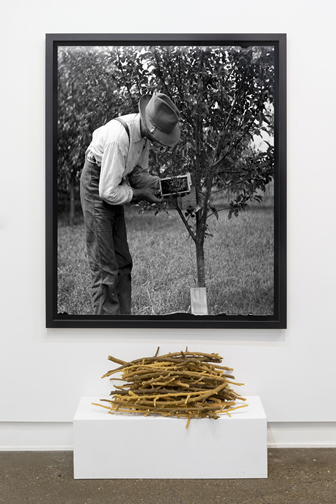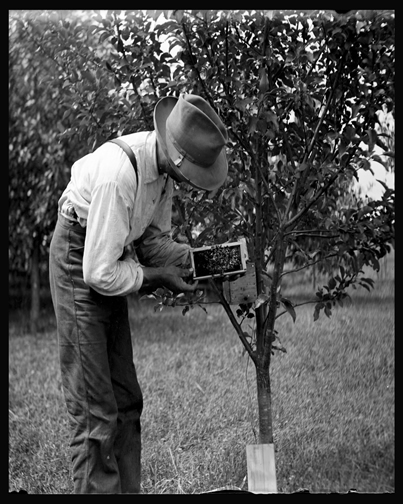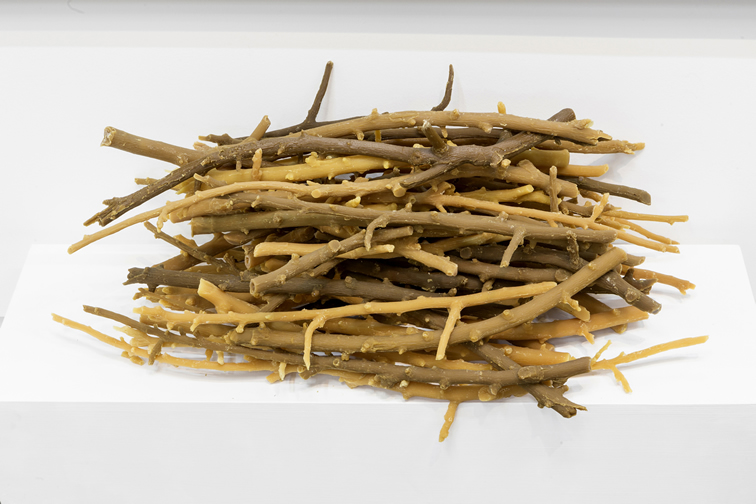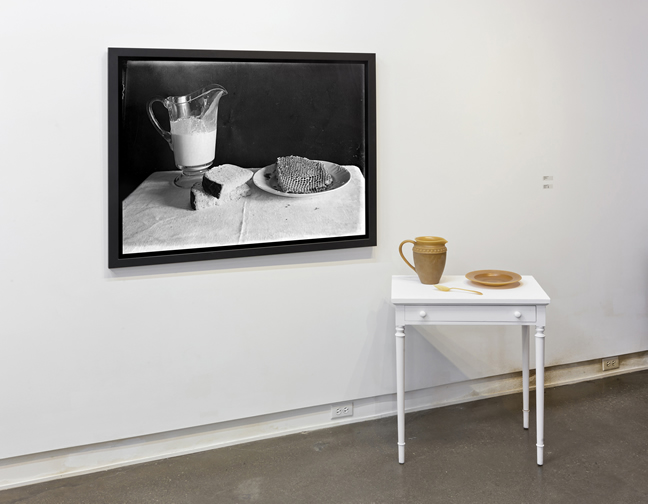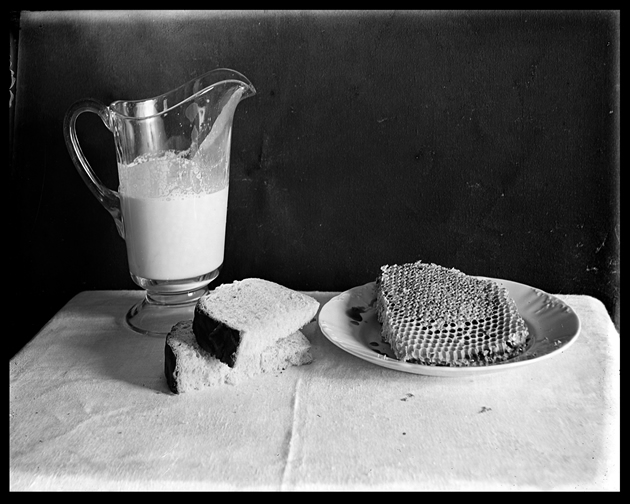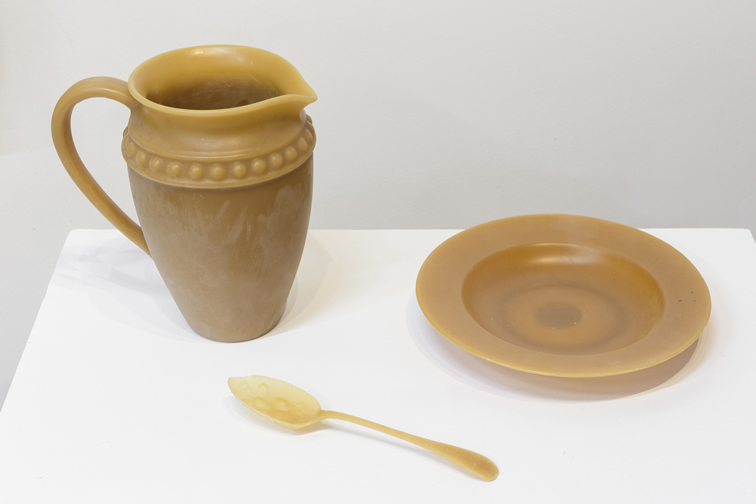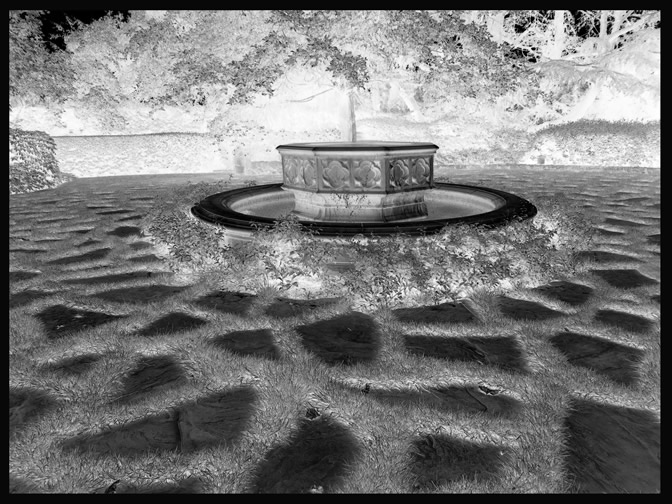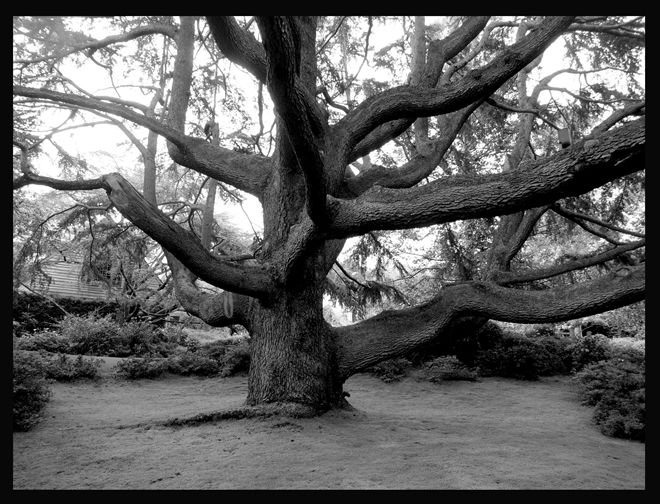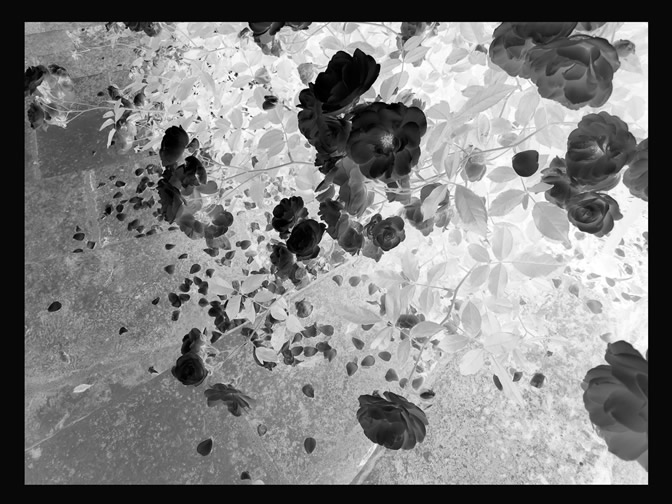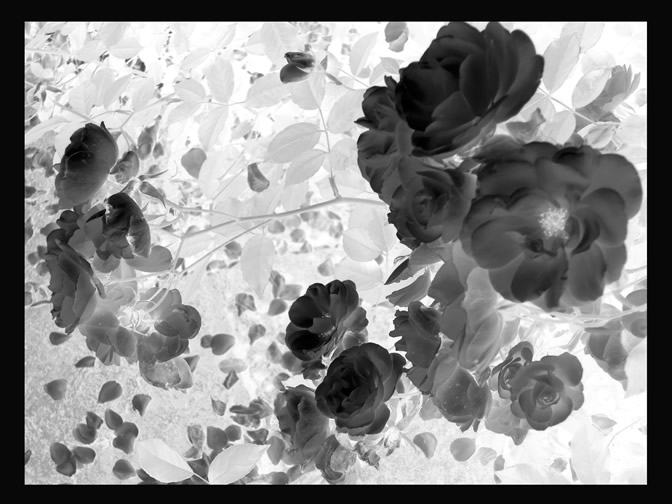Apian Reverie chromogenic archival photograph, 57” x 46”
Nature Morte chromogenic archival photograph, 37” x 46”
beeswax branches various sizes
Bronze branches various sizes
Cedar- Luci’s Tree chromogenic archival photograph, 30” x 40”
Luci’s Magic Garden chromogenic archival photograph, 30” x 40”
Iceberg Roses chromogenic archival photograph, 25” x 34”
Iceberg Roses II chromogenic archival photograph, 25” x 34”
Every garden is a replica, a representation, an attempt to recapture something…[1]
Ruin Gazing an exhibition of Stewart’s photo based work comprises three projects exploring the duplicity of utopian visions of the garden. Each reflects the fragility of our utopian aspirations to transform nature through culture as a means to address our loss and desires.
Trace Laminations explores Stewart’s long fascination with the glass house or conservatory- for its formal attributes of structure, systems and space, and its informal traits such as transparency, reflection and shadow. In both cases these spaces position and re-position the natural world. The glasshouses are romantic architectures that function as museum, as authority, monument and theatre while nature under goes a process of displacement, diminution and transplantation, lodging the glass structures in our collective memory as a replacement for Eden.
Specifically the series comprises ten glass negatives featuring elements photographed of 19th and 20th century greenhouses or conservatories. As a footnote these ghostly images reference the history of photography, and also the practice during WWI to recycle glass photographic negatives for use in greenhouses.
Ruin Gazing Volume 1: paradise gardens is a collection of thirty-six stereoscopic photo cards photographed and created by the artist that reflect a preliminary study of formal gardens as another constructed vision of Eden. Each card set consists of dual images, each representing a slightly different perspective of the same object. This twinning creates a perception or illusion of space and depth when viewed through vintage viewers. Further this collection of images folds in time as each representation floats between a specific past and a simulation of that time in the present.
In ruins we seek the poetic enchantment of enduring material fragments of the past, in order to steal a glimpse of the future. [2]
The garden inherently rejects the boundless space of nature and so suggests a closed space set apart and like the greenhouse, the garden becomes theatre where the gardener acts out the pastoral dream.
In the final work Stewart has used two found black and white 19thcentury glass negatives and printed large life scale prints from each. The first Apian Reverie portrays the gardener working with a small bee box held in the fruit trees of an orchard while the second presents a still life, Nature Morte, featuring a jug of creamy milk beside a honey dripping wax comb.
Accompanying these large photographs is a series of beeswax cast sculptures, expanding the field of the photograph while creating a reciprocal conversation between the image and the objects.
